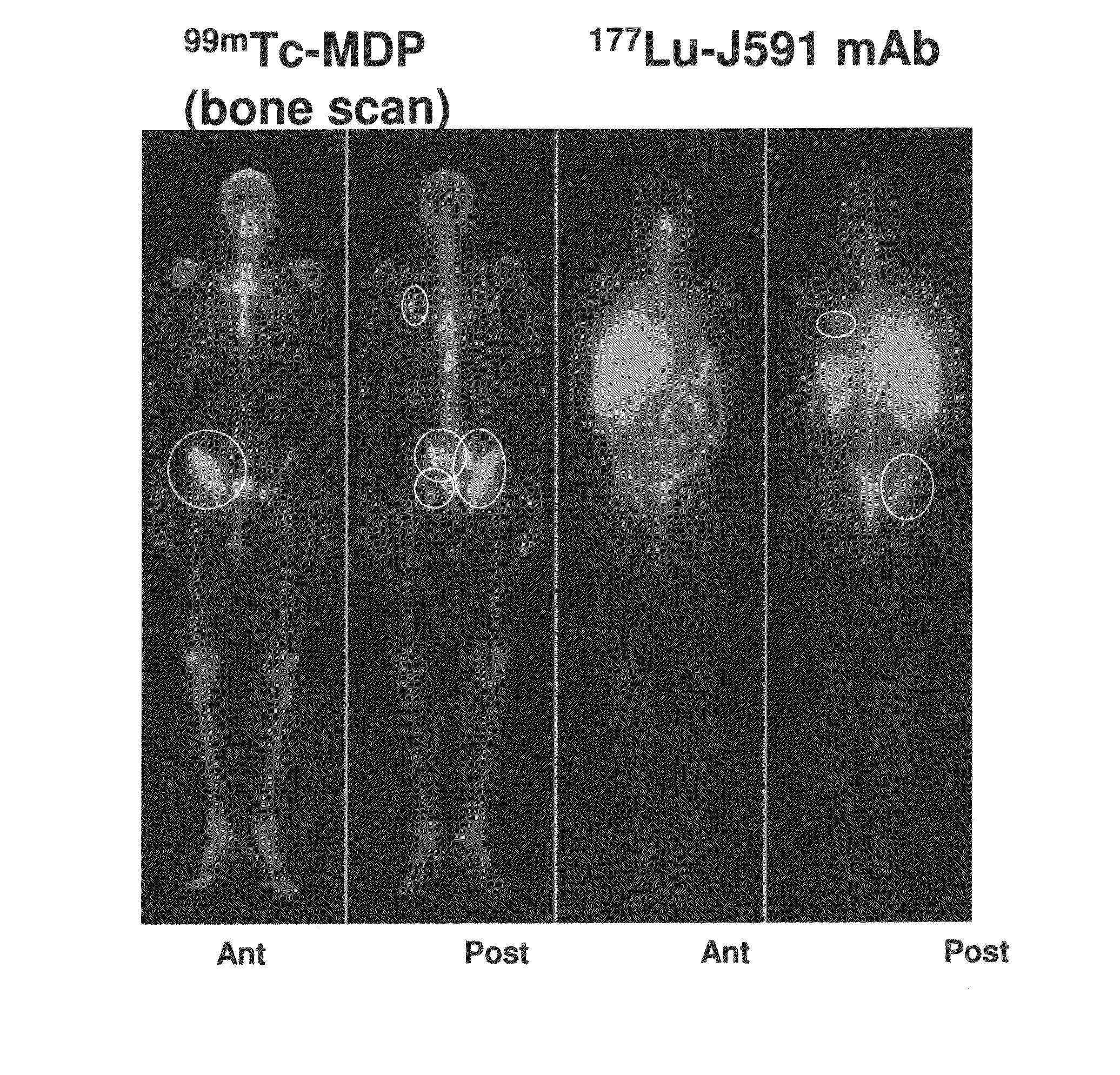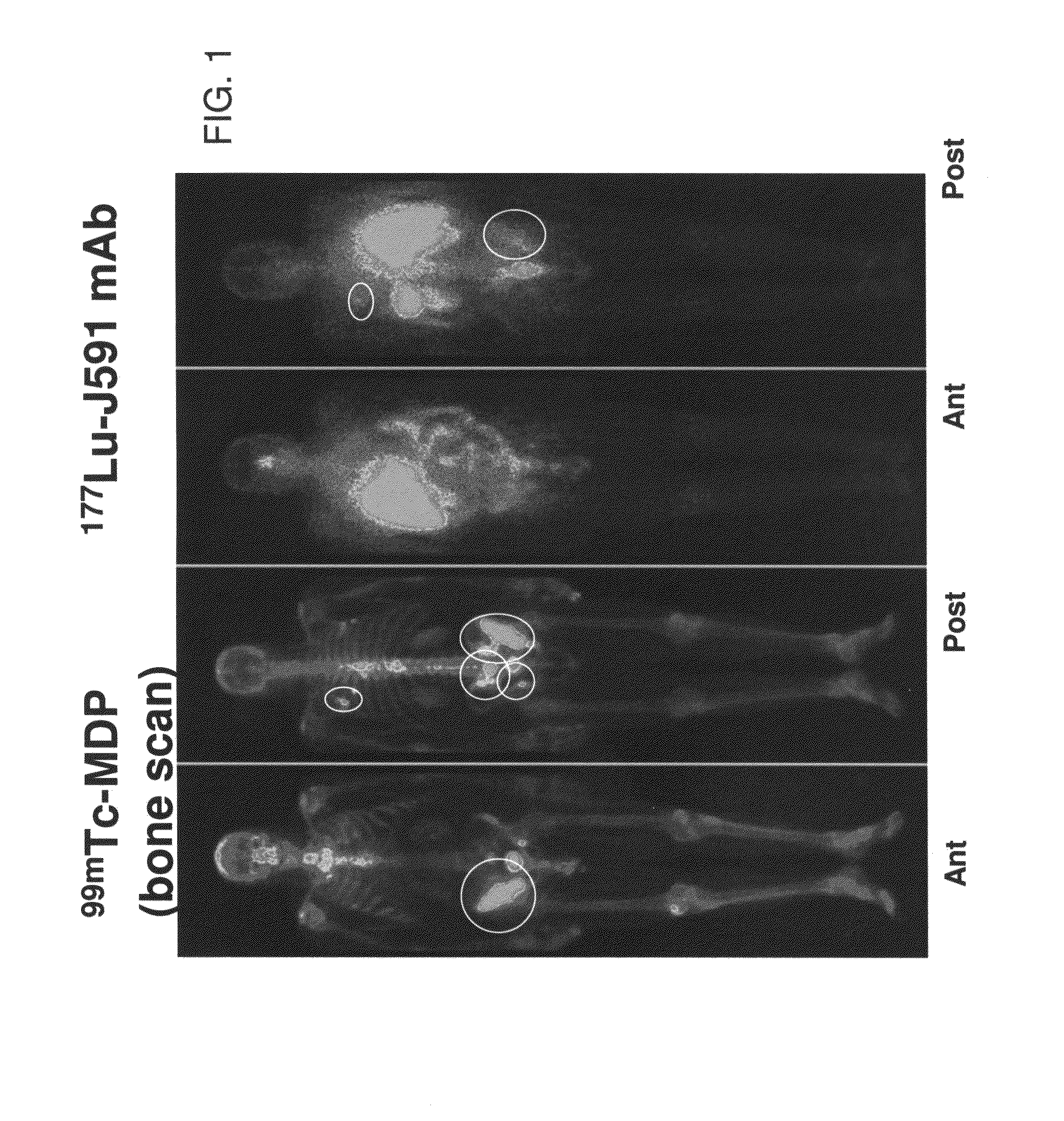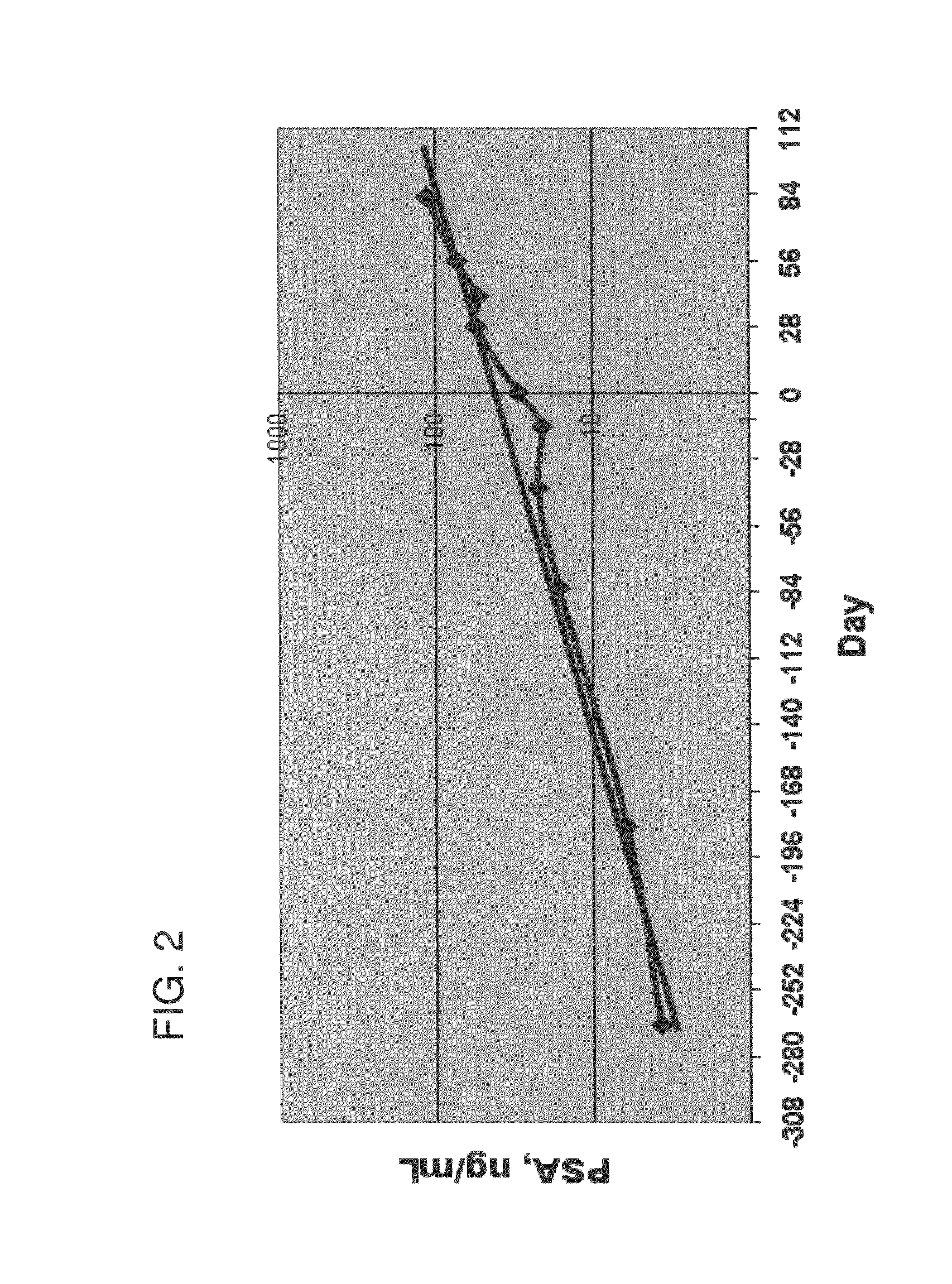Methods and kits for diagnosis of cancer and prediction of therapeutic value
a cancer and kit technology, applied in the field of methods and kits for cancer diagnosis and prediction of therapeutic value, can solve the problems of limited treatment options for prostate cancer patients, many cancers had spread beyond the boundaries of operation, and limited systemic therapy, so as to improve the statistical significance of a clinical trial, reduce the number of patients required, and improve the ability of the trial
- Summary
- Abstract
- Description
- Claims
- Application Information
AI Technical Summary
Benefits of technology
Problems solved by technology
Method used
Image
Examples
example 1
[0101]Thirty-two patients were selected for this study. The patients were administered 99mTc-MDP, for a standard bone scan, and 177Lu-J591 on different days. The study was divided into two cohorts. Cohort 1 (n=15) received a 177Lu-J591 dose of 65 mCi / m2. Cohort 2 (n=17) received a 177Lu-J591 dose 70 mCi / m2 (e.g., about the maximum tolerated dose). Approximately 3 hours after i.v. administration of 99mTc-MDP for a standard bone scan, patients underwent planar radionuclide imaging on a planar gamma camera. Radionuclide bone imaging procedures are well known in nuclear medicine and to those in the art.
[0102]Whole body images of were obtained of 177Lu-J591 and 99mTc-MDP for each patient. In addition, patients underwent either a CT scan and / or MR scan to visualize soft tissues not seen on the bone scan. The 177Lu-J591 images / scans of each patient were blindly scored / graded for targeting of the radiolabel to tumor sites 5-8 days post-treatment. The image grading system measured the intens...
example 2
[0110]One example of an alternative to the semi-quantitative 0-3+ scoring scale is to calculate a quantitative tumor targeting index (TTI). This can be done on a patient's J591 scan by measuring the count density over the most prominent tumor lesion / s divided by the pixel area of those respective lesions. The lesion count density is then corrected for background count density by doing the same calculation (count density divided by pixel area in the region of interest (ROI) using a lesion-negative area generally in the right anterior thigh). The whole body density is defined as the geometric mean of anterior and posterior imaging counts per pixel. TTI=(lesion ROI count density—background count density) / (total body count density). Tumor counts are calculated for a given tumor, over the area of the tumor:
Tcts / area=counts_per_regiontumorregion_area(px)tumor
Background counts are calculated for a given region, over the area of the region:
BGcts / area=counts_per_regionbackgroundregion_area(p...
example 3
Use of Positron Emission Tomography (PET) for Imaging
[0113]Similar to the use of planar imaging as described above, or SPECT (single photon emission computed tomography) imaging, one could also use positron emission tomography (PET) for imaging. PET imaging provides direct, quantitative data reflecting the uptake of the first binding agent. PET imaging can be done with a positron-emitting agent such as 124Iodine, 89zirconium, 86yttrium, or others positron-emitting agent known to those skilled in the art, coupled to the first binding agent. Similar to that described above, the PET-derived quantitative “standard uptake values” (SUVs) allow identification of patients whose lesions demonstrate higher uptake versus those with lower or no uptake. Patients with lesions demonstrating higher SUVs would be predicted to demonstrate higher uptake of the therapeutic second binding agent, in turn, followed by increased likelihood of therapeutic benefit. Use of a directly quantitative imaging moda...
PUM
| Property | Measurement | Unit |
|---|---|---|
| Molar density | aaaaa | aaaaa |
| Capacitance | aaaaa | aaaaa |
| Fraction | aaaaa | aaaaa |
Abstract
Description
Claims
Application Information
 Login to View More
Login to View More - R&D
- Intellectual Property
- Life Sciences
- Materials
- Tech Scout
- Unparalleled Data Quality
- Higher Quality Content
- 60% Fewer Hallucinations
Browse by: Latest US Patents, China's latest patents, Technical Efficacy Thesaurus, Application Domain, Technology Topic, Popular Technical Reports.
© 2025 PatSnap. All rights reserved.Legal|Privacy policy|Modern Slavery Act Transparency Statement|Sitemap|About US| Contact US: help@patsnap.com



